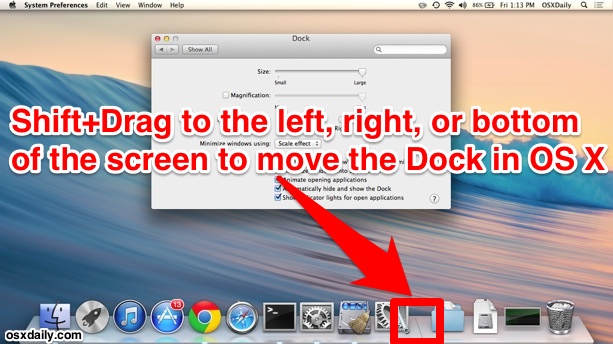- You can use the Command-drag maneuver to reorder many third-party app icons on the menu bar, but I found I couldn't use it to remove them from the menu bar.
- If yes, then just type the name of the app which you would like to have it in your task bar in the Search bar and right click on the app and select Pin to Taskbar. You can see the app in your Taskbar now. Let us know the status of the issue. We will be glad to assist you further.
- Hold down the Command (⌘) key. Hover your mouse cursor over the icon you want to remove. Holding down the left mouse button, drag the icon out of the menu bar and onto the desktop.
The top of our screen on our Mac, sans the menu bar. In order to get it back, you simply need to move your pointer to the top screen edge and it will magically reappear. Move you mouse pointer away and the menu bar will again disappear. If you don’t like this feature, then simply go back into the General settings and uncheck the box. If you’re an easy distracter, then install this handy application right away. The app is capable. To do that, you need an app. There is no shortage of apps that allow you to set app specific volume levels on macOS however there are free apps, and there are paid apps. If you’re looking for something free, we recommend checking out Background Music. Set app specific volume. Download Background Music and install it. It runs entirely in the menu bar where, if you click the app’s icon, you can set individual volume levels for the apps that are currently running. Some windows on your Mac display a row of icons at the top of the window, known as a toolbar. While the toolbar gives you one-click access to commonly used commands, such as saving or printing a file, you may want to hide your Mac’s toolbar so that it doesn’t clutter up the appearance of a window.
The Touch Bar on MacBook Pro gives you quick access to commands on your Mac, and changes automatically based on what you’re doing and which apps you’re using. The Touch Bar is available on MacBook Pro models from 2016 or later, excluding the MacBook Pro (13-inch, 2016, Two Thunderbolt 3 ports) and MacBook Pro (13-inch, 2017, Two Thunderbolt 3 ports).
Find system controls and settings in the Control Strip
When you start up your MacBook Pro, the Control Strip on the right side of the Touch Bar shows a few familiar buttons like volume, mute, and display brightness, as well as Siri. Tap the expand button in the Control Strip to access controls like brightness, Mission Control, Launchpad, and media playback.

16-inch MacBook Pro with Touch Bar
To access the F1–F12 function buttons on the Touch Bar, press the Function (fn) button at the bottom left of your keyboard.
16-inch MacBook Pro with Touch bar has a dedicated Escape (Esc) key. With 13- or 15-inch MacBook Pro with Touch Bar, the Escape (Esc) button appears on the left side of the Touch Bar.
Explore the Touch Bar in apps
Many of the built-in apps on your Mac have Touch Bar controls that make common actions even easier. For example, in Mail, you can use Touch Bar for composing, replying, archiving, marking as junk, and flagging messages.
While you’re composing emails, the Touch Bar predicts as you type—tap a word or emoji in the Touch Bar to insert it.
When you select text, the Touch Bar shows you formatting options like bold, italic, and lists.
Most apps, including most third-party apps, include shortcuts, tools, and controls in the Touch Bar for the tasks that you want to do. Tap around to see what you can accomplish quickly and easily.
Customize your Touch Bar
How To Lower The App Bar On Macbook Air
In many apps, like Finder, Mail, and Safari, you can customize the Touch Bar.
Choose View > Customize Touch Bar. The customization window appears on your display, allowing you to choose your favorite items:

When you're customizing the Touch Bar, its buttons jiggle. Use your cursor to drag items that you want from the display down into the Touch Bar.
You can also drag items left and right within the Touch Bar to rearrange them, or drag them up and out of the Touch Bar to remove them. Click Done on the screen when you finish.
Customize the Control Strip
You can also add, remove, or rearrange Control Strip buttons, including Siri.
How To Lower The App Bar On Mac Os
In any app that supports customization (such as Finder), Select View > Customize Touch Bar. Touch the Control Strip region of the Touch Bar to switch to Control Strip customization.
Then use your cursor to drag items that you want from the display down into the Control Strip.
Drag items left and right within the Control Strip to rearrange them, or drag them up and out of the Touch Bar to remove them. Click Done on the screen when you finish.
You can also enter Control Strip customization mode by clicking 'Customize Control Strip' in the Keyboard section of System Preferences.
Use accessibility options with Touch Bar
How To Lower The App Bar On Macbook Pro
The accessibility features that help you use your Mac can also help you use the Touch Bar. Hold the Command key while you press Touch ID (power button) three times to toggle VoiceOver, which reads aloud Touch Bar commands.
How To Minimize App Bar On Mac
Learn more about using accessibility features with Touch Bar.